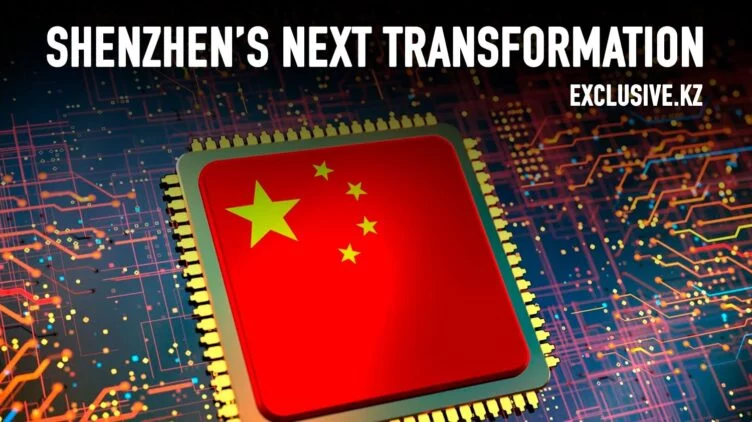China’s tech sector and geopolitically motivated sanctions targeting PRC

For decades, Silicon Valley has been the world’s quintessential tech hub. But plenty of Asian cities – such as Bangalore, Penang, Shenzhen, Singapore, and Taipei – have been working to build similar innovation ecosystems. Shenzhen, located in the southern Chinese province of Guangdong, has been particularly successful.
In 1979, as Deng Xiaoping was launching China’s “reform and opening up,” Shenzhen was a small fishing village, with a GDP of just $28 million, 37% of which came from primary industry. Today, Shenzhen is China’s leading innovation hub, with a GDP of nearly $500 billion, over 40% of which is generated by high-tech industries. Last year, high-tech products accounted for more than 50% of Shenzhen’s $348.4 billion in exports, and in the Global City Competitiveness Index, Shenzhen ranked seventh overall, and first in China.
Shenzhen’s transformation began in 1980, when Deng selected it as China’s first “special economic zone,” where an export-oriented economy would be developed. Firms in nearby Hong Kong – then a British colony and already a center for international trade and finance – quickly began shifting manufacturing to Shenzhen, where land and labor costs were low.
The resulting “front shop, back factory” model facilitated inflows of foreign direct investment and transfers of technology and know-how. By 1994, the FDI pouring into Shenzhen through Hong Kong-based companies accounted for nearly half of all FDI entering Guangdong province, and by 2005, the manufacturing sector accounted for 53% of Shenzhen’s GDP.

But Shenzhen’s transformation was just beginning. Following a 2006 government decision to promote high-tech industries and indigenous innovation in Shenzhen, investment in research and development there soared, from 3.3% of GDP in 2007 to 5.8% of GDP last year. That is even higher than the 5.6% reported in Israel – the country with the world’s highest R&D spending, relative to GDP.
Beyond R&D, Shenzhen invested heavily in building up its human capital. Leveraging its proximity to Hong Kong – with all the capital, talent, and market access it provided – Shenzhen developed an open, inclusive, and dynamic local innovation and business culture that appealed to talent from elsewhere in China and from abroad. Of Shenzhen’s 17.8 million permanent residents, more than 65% hail from outside the city.
Shenzhen also created a thriving local research ecosystem. Taking inspiration from Silicon Valley – which has nearby universities like Stanford and the University of California, Berkeley, to deliver a constant supply of top talent and cutting-edge research – Shenzhen offered world-class Chinese universities land and grants to establish local bases. Peking University, Tsinghua University, and the Chinese University of Hong Kong all have campuses in Shenzhen, and up to half of their students remain in the city to work after graduation.
Shenzhen had another key strength: a deep pool of manufacturers with the resources and capacity to build prototypes – crucial for testing the viability of new ideas or inventions. This helped to attract innovative firms, including Huawei (now valued at $128 billion), China Merchants Bank (with a market capitalization of $111.4 billion), and Ping An Financial Group, BYD, and Tencent, valued at $97.2 billion, $92.5 billion, and $443.74 billion respectively.
These five firms today rank among the top 20 companies in the country, by market value. And their promise is hardly exhausted. Consider Tencent, the world’s largest video-game publisher, the owner of the world’s top-grossing mobile game, and the developer and operator of WeChat, China’s largest and most innovative social-media platform. Tencent is also a leading venture-capital firm that has acquired or invested in more than 800 companies, both foreign and domestic. By taking stakes in innovative technology companies, from Tesla to Enflame and Zhipu (the artificial-intelligence chip startups), Tencent has established a foothold in the AI sector. In 2020, the firm announced that it would invest $70 billion in cloud computing, AI, and blockchain technology.
Beyond these established giants, Shenzhen is home to around 30 “unicorns” (unlisted companies founded after 2000 with a valuation of more than $1 billion) – almost as many as the world’s fifth-ranked country, Germany (36). One of them, the digital bank WeBank, ranks among the ten most valuable unicorns globally. It should thus not be surprising that Shenzhen boasts China’s second-largest stock market, with a total market capitalization of $4.29 trillion – larger than that of Hong Kong – and an electronic trading turnover of $1.39 trillion.
There is reason to think that Shenzhen’s economic future will be bright: its annual GDP growth, at 6%, outpaces that of Beijing, Shanghai, and Guangzhou. But to maintain its growth and dynamism, Shenzhen will have to adapt to a rapidly changing global economic landscape, characterized by the proliferation of geopolitically motivated sanctions targeting China, especially its tech sector.
Effective adaptation is certainly possible. BYD, a world-leading electric-vehicle producer, is facing high tariffs from the United States and Europe, but it is still managing to make inroads into global markets with its cutting-edge battery technology. Huawei has weathered harsh US sanctions partly by building its own microchips and operating systems. The richness, flexibility, and business-friendly character of Shenzhen’s innovation ecosystem will enable more firms there to adapt to the challenges they face.
It helps that Shenzhen is situated within the Guangdong-Hong Kong-Macau Greater Bay Area, an integrated economic zone comprising nine cities and two special administrative regions. Cooperation with neighboring cities has enabled Shenzhen to deepen its links with the Global South. But now Shenzhen’s resilience as a leading manufacturing and innovation hub is facing its severest test, and its ability to make the most of these links will go a long way toward determining whether it passes.
Copyright: Project Syndicate, 2024.





Все комментарии проходят предварительную модерацию редакцией и появляются не сразу.